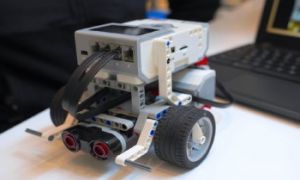By embedding high-quality practices, services demonstrate an unwavering commitment to continuous improvement, educator collaboration, and responsive engagement with children, families, and communities. This introduction sets the foundation for exploring how Exceeding Theme 1 is applied across Quality Areas 1 to 7, shaping a truly exceptional early childhood environment.
Exceeding Theme 1—Practice Is Embedded In Service Operation
Quality Area 1: Educational Program and Practice
Overview
-
Learning frameworks are naturally embedded in daily interactions, ensuring children receive enriched and meaningful experiences.
-
Teaching approaches are consistent and intentional, promoting play-based learning seamlessly.
Example 1
- The approved learning framework is seamlessly integrated into daily routines, ensuring child-centered practices are deeply embedded rather than treated as separate lesson plans.
Implementation
- Educators consistently reflect and adjust their teaching, making intentional teaching a natural and continuous part of learning experiences.
Example 2
- Educators consistently adapt play-based learning based on children's interests and developmental needs, rather than following a fixed curriculum.
Implementation
- Learning environments are structured so children can make independent choices, fostering self-directed exploration that is always embedded in daily practice.
Quality Area 2: Children’s Health and Safety
Overview
-
Safety, hygiene, and well-being measures are routine, instinctive, and deeply integrated into daily practices.
-
Emergency responses and risk assessments are proactively maintained, ensuring a secure environment.
Example 1
- Hygiene and safety practices are automatic and embedded into daily habits, rather than being reminders. Children naturally wash their hands before meals as part of their routine.
Implementation
- Regular staff discussions ensure emergency procedures are refined and reinforced as second nature during drills.
Example 2
- Emergency procedures are so ingrained that educators instinctively respond during drills without needing reminders.
Implementation
Monthly safety reflection sessions ensure all staff update practices based on real-world scenarios.
Quality Area 3: Physical Environment
-
Sustainability and accessibility principles are woven into the service's infrastructure, making eco-friendly habits a natural part of operations.
-
Learning spaces are intentionally designed to evolve with children's needs, promoting independence and exploration.
Example 1
- Sustainability practices are fully embedded into daily routines. Rather than occasional activities, children regularly take part in recycling, water conservation, and growing their own vegetables.
Implementation
- The environment is designed with ongoing safety and inclusion assessments, ensuring spaces consistently meet evolving needs.
Example 2
- Outdoor spaces are naturally integrated into learning, rather than being separate from structured activities.
Implementation
Educators set up flexible outdoor learning zones where children engage in nature-based play daily.
Quality Area 4: Staffing Arrangements
-
Educators collaborate seamlessly, ensuring continuity of relationships and quality teaching strategies.
-
Professional development is structured into daily operations, strengthening reflective practice.
Example 1
- Continuity of educators is prioritized, ensuring secure relationships with children and families, reducing disruptions.
Implementation
- Staff induction and mentoring programs ensure new team members seamlessly align with the service’s embedded quality practices.
Example 2
- New team members are onboarded through mentoring, ensuring they seamlessly adopt high-quality practices that are embedded service-wide.
Implementation
- A structured induction program pairs experienced educators with newcomers to maintain continuity of best practices.
Quality Area 5: Relationships with Children
-
Positive interactions are deeply ingrained, fostering respect, emotional security, and strong educator-child relationships.
-
Responsive engagement supports social-emotional development, with embedded strategies for self-regulation and communication.
Example 1
- Positive interactions are embedded rather than a policy on paper. Educators naturally use warm and respectful communication, supporting children's emotional well-being.
Implementation
- Relationship-building strategies are reinforced through ongoing reflective discussions and training.
Example 2
- Emotional regulation strategies, such as mindfulness exercises, are embedded in everyday routines to support children's well-being.
Implementation
- Visual cues and emotion charts are used across classrooms to guide children in self-regulating their feelings.
Quality Area 6: Collaborative Partnerships with Families and Communities
-
Family engagement is embedded as an ongoing expectation, ensuring shared decision-making and meaningful connections.
-
Community involvement strengthens learning opportunities, making collaborative initiatives an integral part of the curriculum.
Example 1
- Family engagement is deeply embedded—families actively contribute to curriculum ideas and service decisions instead of occasional parent events.
Implementation
- Educators create consistent communication channels where families can shape learning experiences year-round.
Example 2
- Families contribute insights regularly through collaborative meetings, instead of just at formal review stages.
Implementation
- Parent-led workshops on cultural storytelling and traditions are part of ongoing learning sessions
Quality Area 7: Governance and Leadership
-
Leadership practices actively embed continuous improvement, ensuring quality measures evolve to support best outcomes.
-
Quality Improvement Plans (QIP) are not standalone documents but a living part of service operations, guiding reflection and decision-making.
Example 1
- Leadership ensures continuous improvement isn’t a once-a-year review but a daily practice.
Implementation
- Quality Improvement Plans (QIP) are actively referenced and updated as part of the service’s operational flow rather than as an administrative task.
Example 2
- Quality Improvement Plans (QIP) are not static documents but actively inform daily decisions and planning.
Implementation
- Leaders reference QIP goals in every team meeting, ensuring they align with real, evolving practices.
Exceeding Theme 1—Practice is embedded in service operations—ensures that high-quality standards are consistently applied across all aspects of early childhood education. When a service exceeds expectations in this area, best practices become a natural part of daily routines, shaping every interaction, decision, and environment within the setting.
This principle is evident across all Quality Areas of the National Quality Standard (NQS), from educational programming (Quality Area 1) to collaborative partnerships with families and communities (Quality Area 6). It highlights how services integrate intentional teaching, child safety, relationships, governance, and environmental design into everyday practices, ensuring continuity and excellence.
Further Reading
Exceeding Guidance For Quality Area 1
Exceeding Guidance For Quality Area 2
Exceeding Guidance For Quality Area 3
Exceeding Guidance For Quality Area 4
Exceeding Guidance For Quality Area 5
Exceeding Guidance For Quality Area 6
Exceeding Guidance For Quality Area 7







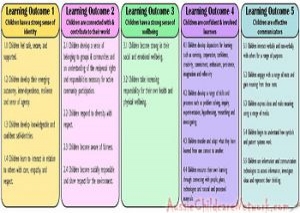 Here is the list of the EYLF Learning Outcomes that you can use as a guide or reference for your documentation and planning. The EYLF
Here is the list of the EYLF Learning Outcomes that you can use as a guide or reference for your documentation and planning. The EYLF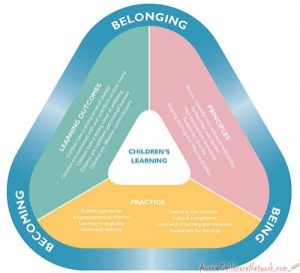 The EYLF is a guide which consists of Principles, Practices and 5 main Learning Outcomes along with each of their sub outcomes, based on identity,
The EYLF is a guide which consists of Principles, Practices and 5 main Learning Outcomes along with each of their sub outcomes, based on identity, This is a guide on How to Write a Learning Story. It provides information on What Is A Learning Story, Writing A Learning Story, Sample
This is a guide on How to Write a Learning Story. It provides information on What Is A Learning Story, Writing A Learning Story, Sample One of the most important types of documentation methods that educators needs to be familiar with are “observations”. Observations are crucial for all early childhood
One of the most important types of documentation methods that educators needs to be familiar with are “observations”. Observations are crucial for all early childhood To support children achieve learning outcomes from the EYLF Framework, the following list gives educators examples of how to promote children's learning in each individual
To support children achieve learning outcomes from the EYLF Framework, the following list gives educators examples of how to promote children's learning in each individual Reflective practice is learning from everyday situations and issues and concerns that arise which form part of our daily routine while working in an early
Reflective practice is learning from everyday situations and issues and concerns that arise which form part of our daily routine while working in an early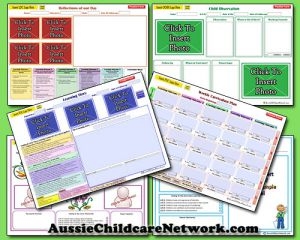 Within Australia, Programming and Planning is reflected and supported by the Early Years Learning Framework. Educators within early childhood settings, use the EYLF to guide
Within Australia, Programming and Planning is reflected and supported by the Early Years Learning Framework. Educators within early childhood settings, use the EYLF to guide When observing children, it's important that we use a range of different observation methods from running records, learning stories to photographs and work samples. Using
When observing children, it's important that we use a range of different observation methods from running records, learning stories to photographs and work samples. Using This is a guide for educators on what to observe under each sub learning outcome from the EYLF Framework, when a child is engaged in
This is a guide for educators on what to observe under each sub learning outcome from the EYLF Framework, when a child is engaged in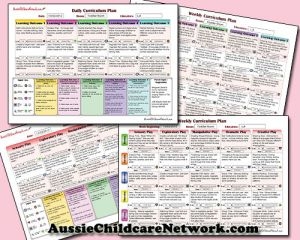 The Early Years Learning Framework describes the curriculum as “all the interactions, experiences, activities, routines and events, planned and unplanned, that occur in an environment
The Early Years Learning Framework describes the curriculum as “all the interactions, experiences, activities, routines and events, planned and unplanned, that occur in an environment
